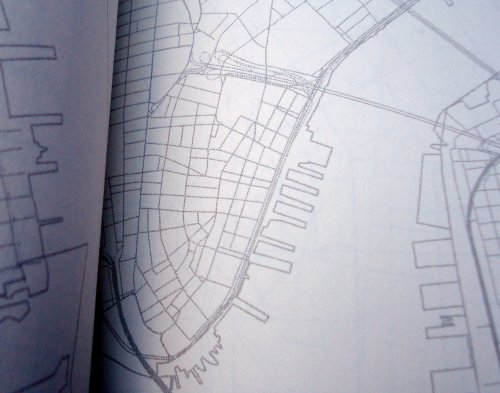

Use a model definition file multiple times to detect change over time or detect objects in different areas of interest.Integrate external deep learning model frameworks, such as TensorFlow, PyTorch, and Keras.Use convolutional neural networks or deep learning models to detect objects, classify objects, or classify image pixels.
Urban gridded notebook pro#
Review and validate results using the attributes pane, and compute accuracy using the Compute Accuracy For Object Detection tool.ĭeep learning tools in ArcGIS Pro allow you to use more than the standard machine learning classification techniques. Use the trained model to run the Detect Objects Using Deep Learning tool, the Classify Pixels Using Deep Learning tool, or the Classify Objects Using Deep Learning tool to generate an output. Train Deep Learning Model tool to train a model using PyTorch, or train the model outside ofĪrcGIS Pro using a supported third-party deep learning framework. The Export Training Data For Deep Learning tool is also supported with the Spatial Analyst extension. nan, colours / max_colour ), origin = "lower" ) plt. transpose ( 1, 2, 0 ) max_colour = colours. maskoceans ( lon, lat, totals ), mpl_toolkits. set_ylabel ( "Mean distance (px$^2$)" ) totals = for driver, k in euc.
Urban gridded notebook driver#
set_ylabel ( "Mean distance (px$^2$)" ) for i, driver in enumerate ( sorted ( euc )): k = euc axs. subplots ( 2, 2, figsize = ( 15, 10 )) for i, driver in enumerate ( sorted ( ks )): k = ks axs. This is a measure of how far apart the quantiles are, and is a good choice if you expect your quantiles to have normally-distributed noise.įig, axs = plt. The sum-of-squares difference, or the Euclidean distance. While it is parameter-free and works on any distribution, it’s also fairly weak and hence tends to under-predict differences in distributions, i.e. if it suggests that two distributions are different they probably are, but if it suggests that they are the same it might not be. Arguably the most common statistical test, besides the Student t-test. The Kolmogorov-Smirnov (KS) distance, commonly used to determine whether two distributions are different in a test known as the “KS test”. There are many, many ways of comparing probability distributions.
Urban gridded notebook drivers#
We can characterise the influence of climate drivers over the rainfall by a) assuming that there is no confounding correlation between climate driver and rainfall, and then b) calculating the distance between the above probability distributions. 14:46:03 (112 KB/s) - `sam.nc.1' saved ĭifference between active phases compared to neutral ¶

Burnt area mapping using Sentinel-2 Near Real Time data.Digital Earth Australia notebooks and tools repository.


 0 kommentar(er)
0 kommentar(er)
